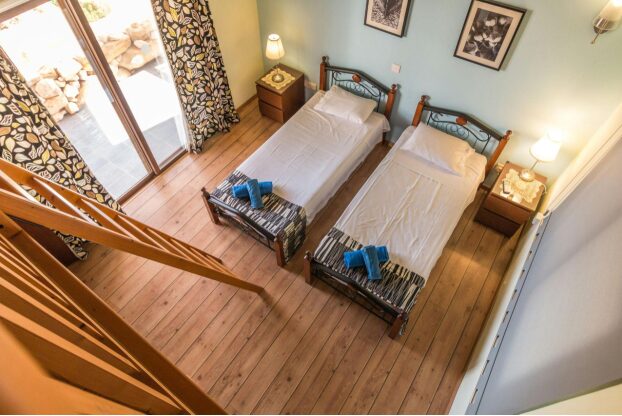The way people sleep says a lot about their lifestyle, culture, and values. Across the globe, there are many types of beds around the world, each offering a unique mix of comfort, tradition, and function. Some beds are soft and raised, while others are close to the floor. Some focus on luxury, others on space-saving or the environment.
In this article, we’ll explore different kinds of beds used across regions, compare them to a standard bed, and touch on the growing trend of the sustainable bed.
The standard bed most people recognize in the U.S., Canada, and many parts of Europe includes a mattress on a raised frame, often paired with a box spring or slats. Sizes include twin, full, queen, and king. Bedding includes sheets, pillows, and a comforter or duvet.
These beds are popular due to their comfort, variety, and support. They’re designed for long-term use and can be paired with stylish headboards, nightstands, or other bedroom furniture.
In Japan, the traditional futon is a thin mattress placed on a tatami mat. It’s folded and stored away during the day to save space. This type of bed suits smaller homes and is part of a minimalist lifestyle.
Futons support the back well and offer a firm sleeping surface. They also promote room flexibility, turning sleeping space into a living area during the day.
Used in countries like Brazil, Mexico, and parts of the Caribbean, hammocks are made from cotton or nylon and hung between two points. They allow for airflow, making them ideal for hot climates.
Hammocks offer a swinging motion that helps some people fall asleep faster. They are also light and easy to move.
The charpai is a woven bed frame made from rope and wood. Common in rural India and Pakistan, it sits low to the ground and is often used outdoors. The ropes provide firm support and help keep sleepers cool.
Its simple design makes it easy to build, fix, and transport. It’s part of a lifestyle that values practicality and airflow.
These beds have tall posts and sometimes curtains. Once used for warmth and privacy in drafty rooms, canopy beds are now a style choice. Found in Europe since the Middle Ages, they are linked with royalty and large estates.
They are often seen today in luxury hotels or vintage-style bedrooms. Compared to a standard bed, they offer more visual impact and structure.
While traditional futons are still used, modern Japanese homes may include low wooden frames called tatami platform beds. These combine tradition with modern convenience. The mattress is still firm, but it rests on a solid, clean-lined base.
This type blends well with simple decor and is ideal for those who prefer a grounded, low-profile look.
In many Korean and Vietnamese homes, people sleep on roll-up mats that are stored during the day. These are similar to futons but thinner. They support floor-sitting lifestyles and are easy to move and store.
These beds help keep living spaces open and are well-suited for multi-use rooms.
In parts of Africa, people use beds raised off the ground to stay away from pests and keep cool. The bed may be handmade with local wood and fitted with netting for mosquito protection.
These beds are both functional and adaptive to the climate and surroundings.
Found worldwide, bunk beds are popular in shared rooms, hostels, and children’s spaces. They help save floor space while providing two sleeping spots in one frame.
While not exclusive to one region, they’re widely used in places with limited space or for families with children.
As more people care about the planet, the sustainable bed is gaining popularity. These beds are made with eco-friendly materials like natural latex, organic cotton, bamboo, or reclaimed wood. They are often paired with mattresses free of chemicals or synthetics.
Some sustainable beds also come with recycled steel frames or biodegradable packaging. People now look for beds that are safe for their health and kind to the environment.
| Feature | Standard Bed | Global Styles |
| Height | Raised | Varies (often low or floor) |
| Mobility | Fixed in place | Many are portable or flexible |
| Materials | Wood, foam, metal | Varies (natural, handmade) |
| Use of Space | Takes room | Some save space (futons, mats) |
| Comfort Style | Soft, spring-based | Ranges from firm to soft |
| Cultural Link | Modern comfort | Deep ties to tradition |
The types of beds around the world reflect different lifestyles and needs. In smaller homes, flexible and easy-to-store bedding is common. In warmer regions, airflow and simplicity matter. In colder areas, layers and thick mattresses help with warmth. And everywhere, people are now considering health, comfort, and the environment when choosing a bed.
Whether you like the look of a classic standard bed, want to try a minimal floor setup, or care about the earth and are looking for a sustainable bed, your choice should match how you live.
Think about:
- The size of your room
- How much support you need
- Your style and comfort preferences
- If you want to reduce waste or go natural
Beds are personal. There’s no “one right bed”—just what fits you best.
Beds may look simple, but they carry culture, comfort, and meaning. From roll-up mats to canopy beds, the types of beds around the world show how different places approach rest and space. Whether you prefer a standard bed or want to explore a sustainable bed, there’s something out there that fits your lifestyle.
If you want to read more about this topic or explore bed styles from around the world, visit Cozy Bed Quarters.
